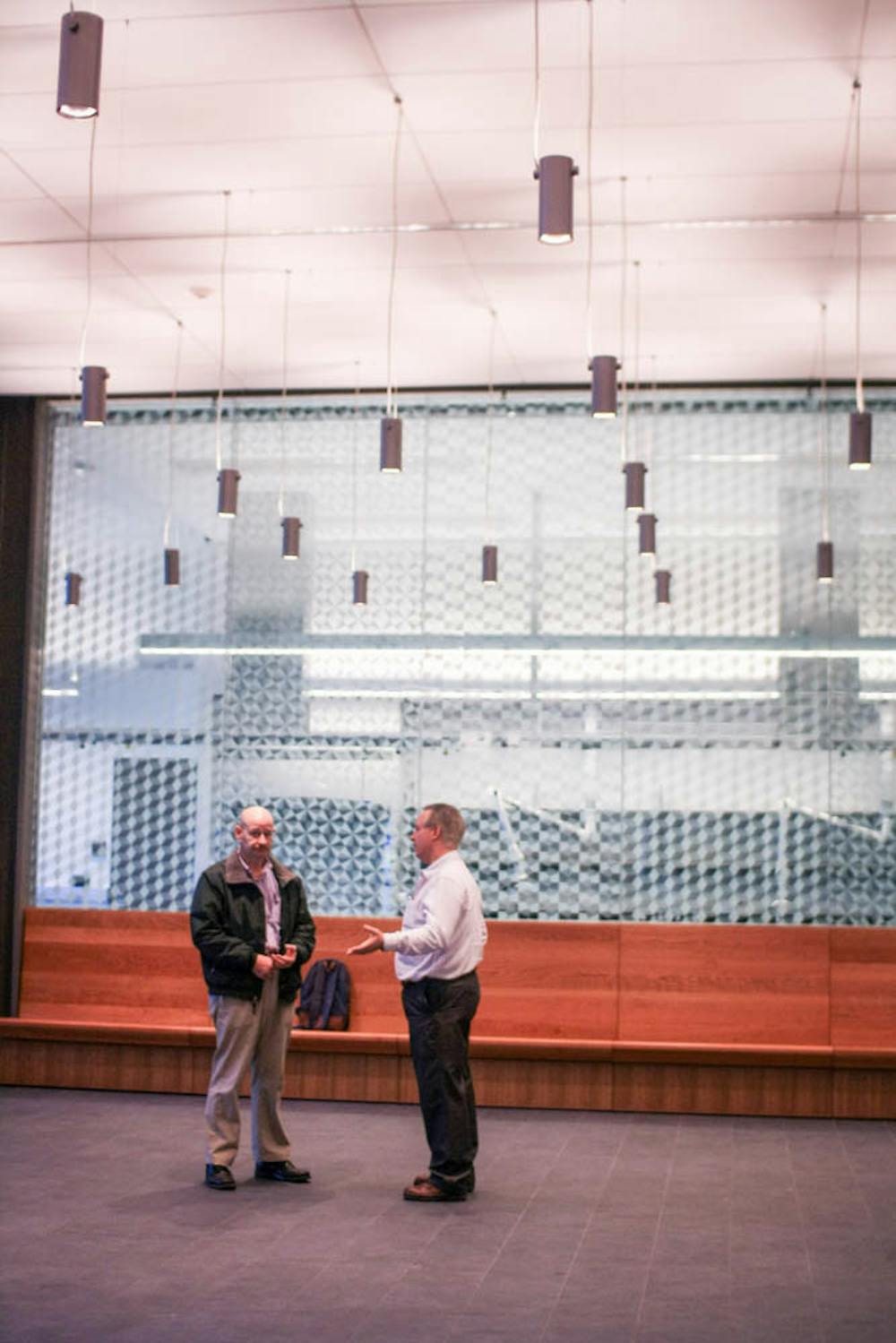The Engineering Research Center opened Oct. 20, three months ahead of its predicted completion date. This week, the School of Engineering will begin moving its staff, faculty and labs into the new building, said Jennifer Casasanto, associate dean for programs and planning. The move-in process is expected to be finished in December.
“Labs are more complex to move because the equipment needs to be taken apart and then reinstalled by equipment manufacturers,” Casasanto added.
The 80,000 square-foot building cost $88 million and includes a nano-technology cleanroom, an advanced imaging suite, a multi-functional commons and open-plan laboratories, according to a School of Engineering flier.
“We didn’t have any space in engineering or physics that could hold our entire community of faculty, staff and students,” she added. “Poster sessions, career fairs, all of that can happen in our commons. We’re just really excited (to) think outside the box about a flexible space that can do all of the things that our community wants to do.”
Besides lacking in community space, Barus and Holley, the former center of the School of Engineering, became increasingly technologically inadequate, Casasanto added. The ERC will give students and faculty members the infrastructure to do more innovative research.
The team’s vision was to create a building that would “be able to be flexible for the research that would be happening inside of this building over the course of its life,” said Michael Guglielmo, director of design and construction. “There were some innovative aspects that were incorporated within those labs to (enable) the future reconfiguration of the labs.”
The architects “created this L-shaped configuration that ultimately stitched Prince Engineering (Lab), the Giancarlo Wing and the original Barus and Holley structure altogether. It all comes together (in the) new commons,” he added.
Dean of Engineering Larry Larson said the adoption of the integrated project delivery method, which allows the University, architect, contractor and subcontractors to collaborate on every step, was a factor that allowed for the early completion of the building. “Rather than an adversarial process where everybody’s fighting with each other, we all teamed together at the beginning of the project,” he said. “Everybody really checked their egos at the door and worked very collectively and very productively.”
The ERC was the first project that KieranTimberlake, the building’s architecture firm, had built using the integrated project delivery method, said Rachel Stoudt, an architect on their team. “It was pretty neat for us to be able to get feedback from (contractors and subcontractors) early on, which then affected the drawings and made (both) our drawings … and our building (design) smarter,” she added.
The collaborative nature of the building goes beyond the building process, said Maria Fernanda Lugo Bolanos GS, member of the Engineering Student Advisory Board. “We want to invite all of the community at Brown to (use the new building), not only engineers,” Lugo Bolanos said. “When people from different backgrounds collaborate, magic happens.”
The Engineering Student Advisory Board will be hosting several upcoming events, including a Halloween movie night and a salsa dancing class, with the hopes of drawing University community members from all disciplines to the center, Lugo added.
These events will take place in the lobby, which is referred to as the “commons,” Casasanto said.
The ERC’s ribbon-cutting ceremony will take place May 24, 2018, Larson said. The ceremony will allow community members to celebrate the building and will feature several speakers, including President Christina Paxson P’19.
The new building “shows that Brown really cares about engineering because they put all of this money and effort into this project, (which) will create a better learning environment for undergrad and grad students alike,” said Blas Lezcano ’18, member of the Engineering Student Advisory Board. “It’s kind of like a new beginning for the engineering department as a whole. I’m excited to see what is to come.”





